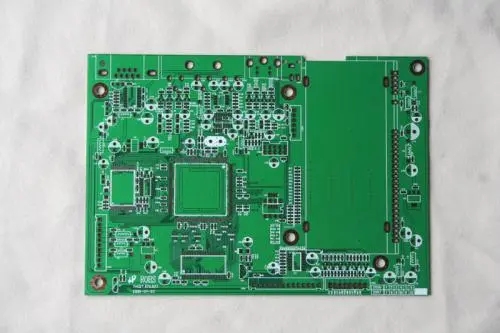Digital ground is a connecting wire used to connect different components, modules, and chips in a digital circuit together to form a digital ground entity. It is not a type of component, but a circuit connection wire. In digital circuits, digital ground is commonly found in many microcontroller development boards and other digital circuit designs.
As one of the circuit connecting wires, the main function of digital ground is that it is used to transmit the status point signals in the circuit. The components connected by digital ground share the same position point, which can ensure the stability of the circuit signal and reduce circuit interference.
Components are basic electronic components that can be used independently in electronic circuits, such as resistors, capacitors, inductors, diodes, transistors and so on. While digital ground is a circuit connection line, it can not be used independently like components.
The main role of digital ground is to provide connections for components in a circuit, rather than functioning as part of the circuit. Therefore, digital ground does not belong to the category of components.
Analog grounding, also known as virtual grounding or false grounding, usually refers to the use of some specific circuits in electrical equipment to simulate the effect of grounding, thus improving the safety of the equipment.
The role of analog grounding
The main function of analog grounding is to protect electrical equipment from phenomena such as lightning strikes or electric shocks. In some occasions, due to the special environment in which the equipment is located or the task requirements, it is not possible to truly ground the equipment, and the use of analog grounding can achieve a certain protective effect.
Another function of analog grounding is that in some electrical equipment that needs to be grounded, the grounding resistance can be reduced by means of analog grounding, which in turn improves the safety of the equipment.
Advantages and disadvantages of analog and digital grounding
The advantages of analog grounding are low circuit complexity, low cost, applicable to simple analog circuits,and able to reduce the degree of circuit interference. However, there are also disadvantages, such as susceptible to external interference, resulting in noise and other quality problems.Digital grounding has the advantage of effectively eliminating the interference of digital circuits on analog circuits, increasing the stability of the circuit, improve the global quality of the product,but the disadvantage is that the complexity of digital circuits,high cost,and some digital signals can be generated on the ground line to produce independent interference.

Can digital ground and analog ground be connected together?
Digital and analog ground can be connected together in some cases, but in other cases they need to be handled separately. This depends on the specific application and design requirements.
In a mixed design of digital and analog circuits, digital circuits operate at high frequencies and are noisy, while analog circuits require lower noise and interference. Therefore, if digital and analog grounds are connected directly together, noise in the digital circuit may be coupled to the analog circuit through the ground, thus affecting the performance of the analog circuit.
However, in some cases, the digital ground and the analog ground may be connected together. For example, when the operating frequencies of the digital and analog circuits do not differ significantly and are not highly sensitive to noise, their grounds may be connected together. In addition, digital and analog grounds can also be connected together if appropriate isolation and filtering measures are taken, such as the use of isolation transformers, filters, etc.
However, in most cases, in order to ensure the performance and stability of the analog circuit, it is recommended that the digital and analog grounds be handled separately. This is done by using different ground layers or ground areas on the board, or by using specialized isolation devices to separate digital and analog ground. This can effectively reduce the interference of digital circuits on analog circuits and improve the performance and stability of the entire system.
In short, whether the digital ground and analog ground connected together need to be based on specific application scenarios and design requirements to decide. In the case of the need to ensure the performance of the analog circuit, it is recommended that the digital ground and analog ground are handled separately.
In hybrid circuit design, the grounding method of digital ground and analog ground should be chosen flexibly according to specific requirements to ensure system stability and performance optimization. With the right strategy, we can reduce interference, improve efficiency, and promote the excellent performance of electronic products.